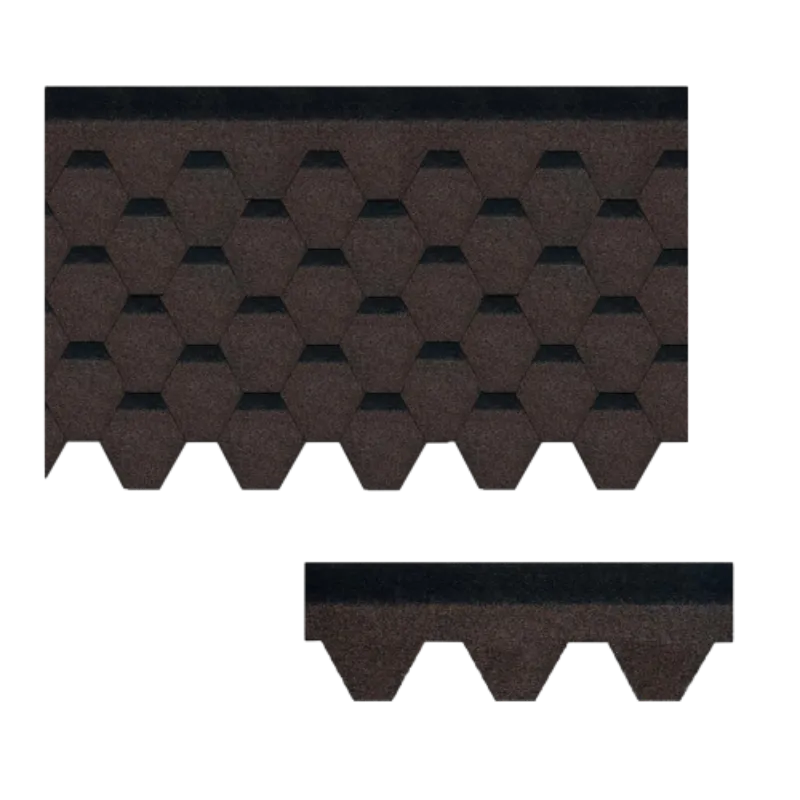
Avq . 12, 2024 06:48 Back to list
Understanding the Components and Layers Involved in Asphalt Shingle Roofing Systems
Understanding the Layers of Asphalt Shingle Roofs
Asphalt shingle roofs are a popular choice for residential homes due to their affordability, durability, and ease of installation. One of the key aspects that contributes to the effectiveness and longevity of an asphalt shingle roof is the layered structure it comprises. Understanding these layers can help homeowners make informed decisions about their roofing needs.
1. Decking or Sheathing
The first layer of an asphalt shingle roof is known as the decking or sheathing. This is usually made from plywood or oriented strand board (OSB), and it forms the solid base upon which the entire roofing system rests. This layer provides structural support and distributes the weight of the roof evenly across the rafters and beams of the house. The sheathing must be installed correctly and securely to ensure that the roof can withstand various weather conditions.
2. Underlayment
On top of the decking, a layer of underlayment is installed. This is critical for enhancing the roof’s waterproofing capabilities. Underlayment typically consists of felt paper or synthetic materials that provide an additional barrier against moisture infiltration. It also protects the decking from potential leaks caused by ice damming or heavy rains. When selecting underlayment, homeowners can choose from different types, such as asphalt-saturated felt or a newer synthetic underlayment that offers heightened durability and water resistance.
3. Asphalt Shingles
asphalt shingle roof layers

The most recognizable layer of a shingle roof is, of course, the asphalt shingles themselves. These shingles are made from a base material coated with asphalt and granular materials for added protection against UV rays and physical wear. Asphalt shingles come in a variety of styles and colors, allowing homeowners to customize their roofs while ensuring they meet aesthetic preferences. There are generally two types of asphalt shingles three-tab, which provide a classic look with a flat appearance, and architectural shingles, which are thicker and offer a multi-dimensional appearance.
4. Flashing
While not a distinct layer in the same way as the others, flashing plays a crucial role in the overall waterproofing of the roof. Flashing consists of thin pieces of durable material, typically metal, that are installed at edges, valleys, and roof penetrations (such as chimneys or vents) to prevent water from seeping into the roof system. Properly installed flashing is essential for preventing leaks and prolonging the life of the roofing system.
5. Ventilation
Effective ventilation is also an integral aspect of an asphalt shingle roof system, although it is not a physical layer. Adequate ventilation helps regulate temperature and moisture levels in the attic space, preventing damage to the roof structure and decking. Roof vents allow hot air to escape, which can significantly reduce the risk of ice dam formation and overheating in the summer months.
Conclusion
The layered construction of an asphalt shingle roof is fundamental to its performance and longevity. Each layer—from the decking to the underlayment, shingles, and flashing—plays a specific role in protecting the home from the elements. For homeowners considering a new roofing project or needing repairs, understanding these layers can aid in making better choices regarding materials and installation techniques. Ultimately, a well-constructed asphalt shingle roof, with attention to each layer, can provide reliable protection and enhance the home’s overall efficiency and aesthetic appeal.
-
Moonlight White HIREFLE Granules with GPT-4 Turbo
NewsAug.02,2025
-
Premium Round Asphalt Shingles: Durable & Elegant Roofing
NewsAug.01,2025
-
Eco-Friendly Clay Tiles | AI-Enhanced Durability
NewsJul.31,2025
-
Durable Shingle Granules for Premium Roofs
NewsJul.31,2025
-
Stone Coated Metal Roof Tile-Roman Tile for Durable Roofing Solutions
NewsJul.30,2025
-
Stone Coated Metal Roof Tile-Wood Grain Tile for Durable Roofing
NewsJul.30,2025







